Because of my middle name, I always get asked whether I am a Muslim or if I am from Andalucia. That was when I was living in Cuba and Mexico. This piqued my interest about Andalucia. I finally had an opportunity to visit in May 2013. I selected Cordoba, Seville, Granada and Malaga as destination cities without putting much thought into it. I merely looked on the map and decided that Cordoba, being closest to Madrid, would be my jump-off point.
I went about booking my room accommodations. I made sure that I would only stay in a hostel for budgetary reasons. I remember the embarrassment of asking a loan from other people when I went over-budget in Vienna three years ago. This time, I resolved not to pay more than 25 Euros for a room per day. With the help of hostelworld.com, my room reservations were firmed up rapidly.
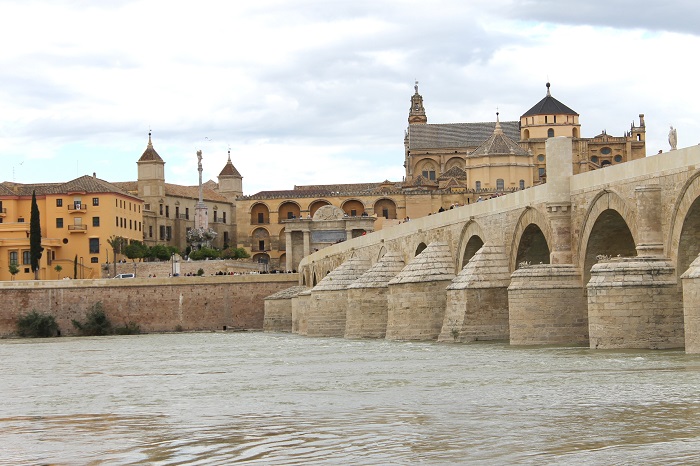
Arriving in Cordoba via RENFE train from Atocha Station in Madrid was a breeze. I always enjoy riding high-speed trains in Europe. They are fast and comfortable, which makes me wonder about the resistance against high-speed rail in the US. Trains may be a bit expensive than riding buses, but are still cheaper than riding a plane. Train stations are also much closer to the city than airports. In Cordoba’s case, it is merely few blocks away from the historic city center.
With such a fine, cool post-Spring weather, walking was definitely a better option than riding a taxi. I chose a hostel that was perfectly-located in the former Jewish quarter, a few blocks away from the famous Mezquita. Incidentally, without having planned it, all the hostels I had chosen for my sojourn were in the old Jewish quarters. They all had spartan accommodations and came with shared bathrooms. The barest luxury was the space heater, which came handy as the weather was surprisingly cold for early summer. I was expecting hot and humid weather all around and, boy, was I so wrong.
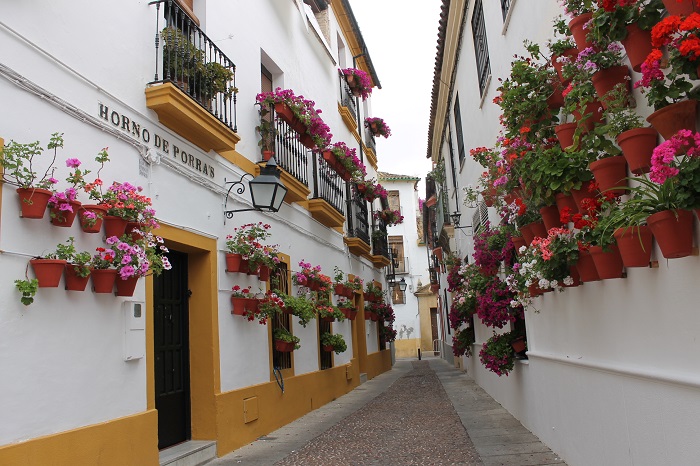
Cordoba was a magnificent sight. This was the capital of the old Islamic Caliphate of Corduba. Its history can be traced right back to the Carthaginians and Romans. In fact, a Roman bridge still spans the Guadalquivir River. Also, the ruins of a Roman temple sits beside the Ayuntamiento, the City Hall. A new, vibrant modern city now surrounds the old historic center, which is considered a world heritage site. The historic center has preserved its medieval atmosphere, which makes you feel as if you were going back in time.
At night, a recording of a muezzin calling the faithful to prayer canbe heard from the minaret of the old Mezquita. This reminds both visitors and locals alike of the Moorish heritage of the place. It is here at the historic center where the vast majority of the city’s tourist attractions can be found. I especially liked loitering around Plaza de la Corredera, with its bars and restaurants. In Ancient Roman times, it was the location of the amphitheater. In later years, the ampitheater became a bullring, hence the name. Bike lanes, as in most European cities, are provided in the major avenues so the city is best enjoyed by foot or by bike.
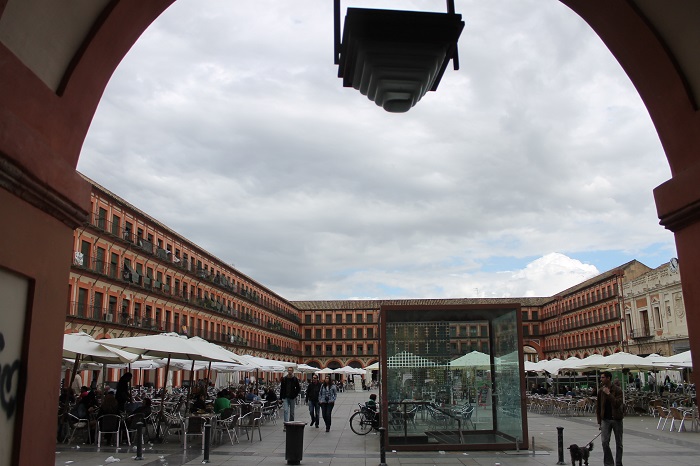
The La Juderia, as the Jewish Quarter is called, is particularly striking. It still bears the original street numbers and housing pattern of the old Jewish Quarter. Its synagogue, decorated in Mudejar style, is one of the best preserved in all of Spain. The old Jewish inhabitants have, of course, disappeared now. They were expelled during the Spanish Inquisition in 1492, the same year that Christopher Columbus discovered the New World. Incidentally, the old Spanish Jews were instrumental in having that voyage come to fruition. The Jews of Andalucia provided funding, manpower and astronomical knowledge that enabled Columbus to sail to the Americas.
The expulsion of the Jews from Spain was something that I contemplated heavily. I wondered about what might have happened to its original owners. In the old Al-Andalus, the three great faiths coexisted peacefully under a policy called convivencia. The Moorish rulers levied taxes on the Christian and Jewish residents. But the rulers left them peacefully to practice their faith. This is a stark contrast to what happened after the reconquista of Ferdinand of Aragon and Isabela of Castille. Religious tolerance would later be replaced by the Spanish Inquisition. This led to the expulsion of the Jews and Moors by the force of the sword.

In fact, I presume that the current religious tensions started to manifest as a result of the unraveling of the convivencia in Al-Andalus. Nowadays, it would be nearly impossible to find Jews, Christians and Muslims living together in peace and harmony. Yet, the Muslim influence has endured in Cordoba. Kebab was my food of choice during my trip. It was not because I’m an aficionado but because I was on a strict budget. They were the cheapest food available and ubiquitous.
Two hours away by bus from Cordoba, my next stop, Seville, is a different sight altogether. Also situated along the banks of the Guadalquivir River, it is the largest city in the autonomous Andalucian region. It was once the epicenter of Spanish exploration of the New World. The expeditions of Christopher Columbus and Ferdinand Magellan started in Seville. It is connected to the sea via the navigable Guadalquivir River. The city once hosted the Casa de Contratación, which, at one time, had monopoly over transoceanic trade. This was before the silting of the Guadalquivir River forced the transfer of the house to nearby Cadiz in 1717. All explorers must pass through Seville before being given permission to start their journey.
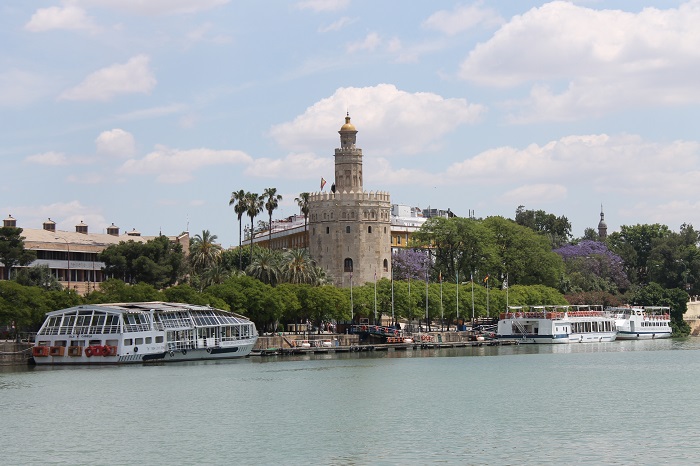
Evidently, the city was one of the richest of Old Spain. By virtue of its place in history, the wealth of the New World once passed through Seville. Its historic center spans a very large area with a number of architectural gems to be found. Not the least of which are the Alcazar and Sevilla’s Gothic cathedral, the third largest church in the world. Alongside the cathedral is the Mudejar-styled La Giralda, formerly a minaret, now a bell tower. This tower provides for an excellent view of the whole city. Columbus is supposed to be buried in the cathedral. (I have also been told by Cubans that he is buried in Havana’s Cathedral).
Getting around Seville is easy with its efficient bus and metro system. For me, cycling was the best option. Cycling through the muelle with its beautiful parks and recreation areas was an awesome experience. Seville has one of the most extensive bike lane systems I have seen so far. I stayed in Barrio Santa Cruz, the former Jewish quarter. This is located right beside the Real Alcazar. I was walking distance from all the best sights of the city. Visiting Seville (or Andalucia, for that matter) would not be complete without watching a flamenco dance. The Museo del Baile Flamenco is a must-see for flamenco enthusiasts. Also a must-see is the former tabacalera real, now the University of Seville. Nightlife in Seville is absolutely fantastic with its numerous bars, restaurants and discotheques.
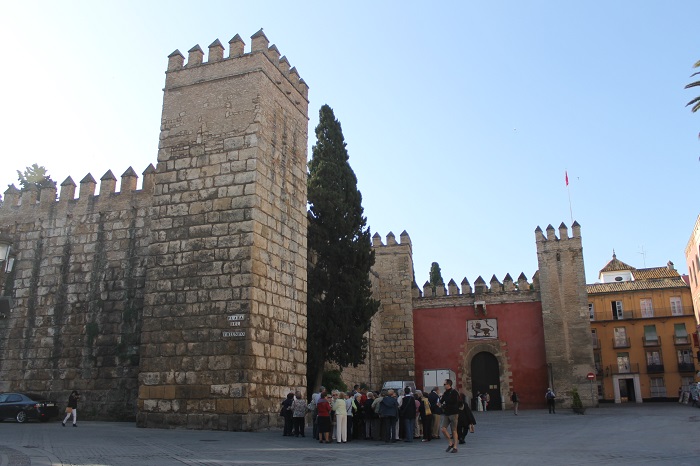
As a Filipino, visiting the Casa de Contratación, which is housed inside the Real Alcazar, was like going full circle. It was from this small room that Magellan received permission to start his voyage which led him to the Philippine Islands. Unfortunately for him, he got killed by natives there. The remnants of his crew, led by Basque sailor Juan Sebastian Elcano returned to Spain. They were the first to circumnavigate the globe. It was at the Casa de Contratación too where Elcano, upon his return to Seville, kneeled at the image of Our Lady of Good Voyage to thank the heavens for his incredible feat of survival. Only 17 out of 240 sailors survived from Magellan’s original crew. I consider Seville as the “real” starting point of Magellan’s voyage because his ships sailed from there to the open seas through the Guadalquivir River.
Next stop was Granada, which is three hours away by bus from Seville. Most guide books describe it as the single most worthwhile city to visit in Spain. I respectfully digress. Of course, the famous Alhambra is located there. But if I was to rank which city I hated most during my sojourn, this would be it. Granada does not have the same ease of movement via cycling as the other cities I’ve visited. It was also overrun with tourists (this was peak season, understandably). Still, the Alhambra and the Alcazaba are worthwhile enough to subject yourself to the vicissitudes of jockeying with the multitudes. The Capilla Real of the cathedral is also worth a visit because the Catholic monarchs Ferdinand and Isabela are entombed there. It was here in Granada where the last of Moorish rulers surrendered to the Christian army of Ferdinand and Isabela.
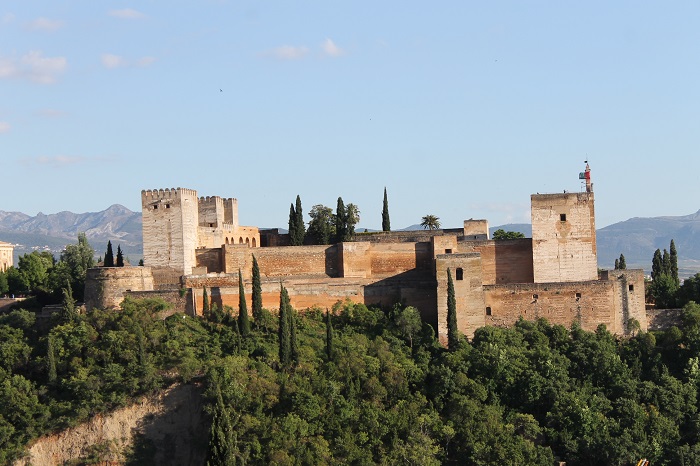
Ironically, Boabdil, the last Muslim sultan of Granada, aided the Christian army against his own father so that he could take power. It was Boabdil, in a cruel twist of fate, who surrendered the city to the Catholic forces of Ferdinand and Isabela in 1492. The beauty of the Moorish Alhambra can be best enjoyed from the lofty heights of the Mirador de San Nicolas in the Albaicin, the old Arabic quarter, in early evening when the walls of the fortress are bathed with lights. Despite all its glory, Granada was the worst-maintained city that I have seen during my sojourn. Garbage was everywhere and the signs of a failing economy are evident with many dilapidated edifices to be seen. Albaicin strangely reminded me of Habana Vieja and its collapsing buildings.
Yet, it is here where I felt the atmosphere to be evidently Moorish. This is probably because the city hosts a large North African immigrant population who settled in the area during the peak of the boom times. This is probably poetic justice as this was formerly Moorish heartland. Now, the Muslims are making their own version of a non-violent reconquista. The Albaicin has not changed much, which explains its decrepit atmosphere. It was here in the Albaicin where I saw my middle name (Aljibe) plastered around quite a bit. At the Mirador de San Nicolas, I asked an enterprising vendor who specializes in writing the names of tourists in Arabic script to write mine. He looked at my middle name and said: “Your family must be from here,” not knowing whether that was true or not. Apparently, my middle name is of Arabic origin, which I didn’t know before.

Getting around Granada was difficult with a bike so I decided to rent a moped near Plaza Nueva, the epicenter of tourist activity in the city. The best option for those who do not want strenuous exercise is to ride the air-conditioned minibuses that traverse through the Albaicin and near the Alhambra. After getting physically and mentally tired of the congestion, I decided to motor all the way to the snow-capped peaks of Sierra Nevada, which frames the background of the Alhambra. I have never seen snow before and I was intrigued by finally seeing one close hand (I experienced a hailstorm once in Boston, but I guess that does not count).
The mountain range contains the highest peak in Spain, the Mulhacen, at 3,478 meters. Its peaks are coated in snow all year round which makes it a popular location for skiing. Even in late May, the peaks still glistened with white snow. At the foot of its slopes, the ski town of Pradollano can be found. I rode my rented moped, ill-clothed for the occasion wearing shorts and t-shirt, eager to try snowboarding. But, the village was predictably deserted in late May. I had expected to find a few shops to rent a snowboard and buy appropriate clothing. Now, I was freezing, and, not having applied any sunscreen, my skin was already getting burnt by the harsh sunshine. I was simultaneously experiencing the effects of sunburn and wind chill.
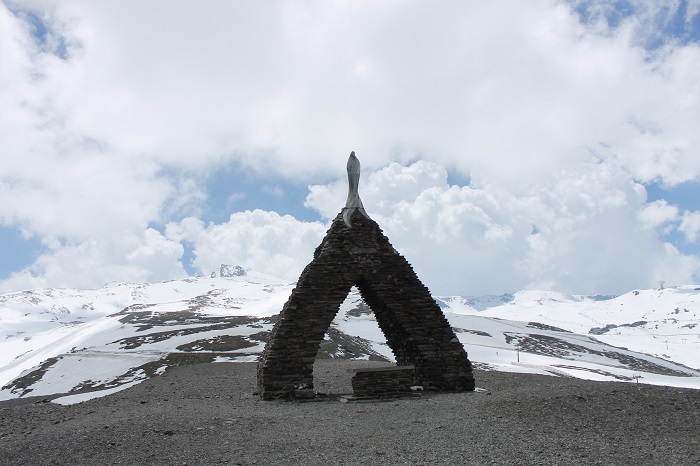
To avoid freezing while driving, I motored in the most leisurely pace I could have to temper the effects of the wind chill, which only exacerbated the sunburn. By the time I reached Granada, my skin was so red I could be mistaken for an American Indian. I had planned to visit Motril, which is famous for the Pass of the Moor’s Sigh. It was there that Boabdil took a last glimpse of the fallen Granada and was moved to tears (hence the name). My sunburned/half-frozen condition prevented me from visiting it. There’s always the next time.
One and a half hours away from Granada is Malaga, my next stop. I had no idea about the city, save for its Primera Liga football team. I had chosen it over Marbella because it has a direct train route back to Madrid. Yet, I was blown away by the beauty of the city . Located in Spain’s Costa del Sol (along with the more famous Marbella), the city offers an excellent mix of beaches, culture, history and architecture. Being near the sea, it has a more laid back feel than other Spanish cities. Cycling is the best means to go around with its extensive system of bike lanes that rivals that of Seville. Malagueños, as the locals are called, definitely have it best. The modern, cosmopolitan city is a perfect example of building urban space around human kinetics and not the automobile.
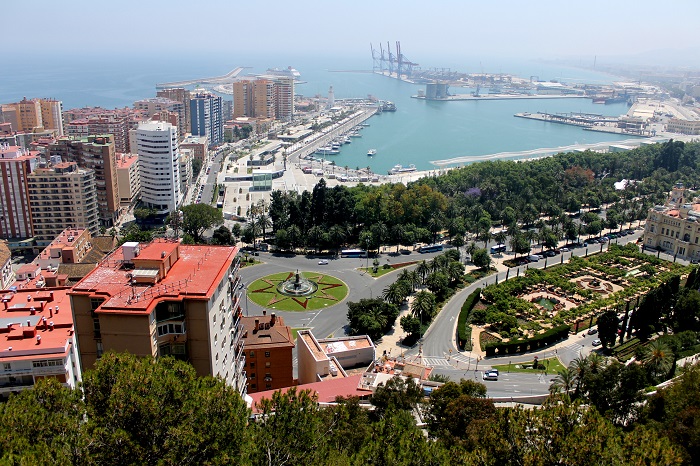
Malaga is definitely worth exploring as a place to retire. The old Moorish fortresses of the Alcazaba and the Gibralfaro overlook the city, while the ruins of a Roman amphitheater sits alongside both fortifications. It was here where I finally broke away from my thrifty ways and savored the best that the Andalucian cuisine could offer. I sampled the region’s famous food fares, such as the paella, gazpacho, espeto, rabo de toro and cazon en adobo.
Malaga can be a blueprint by emerging economies on how environmental sustainability can be incorporated into city planning. The city is amazingly clean and orderly. I especially liked loitering along the muelle (port) project with its numerous bars, restaurants and shops, which were a short walk away from my lodgings in the city’s former Jewish quarter. Famous as the birth place of Pablo Picasso and Antonio Banderas, the city has a lot to offer in terms of culture and the arts. I, on the other hand, loved the city’s vibrant nightlife. It felt like Miami. And as they say, Miami is the place where you let inner doucheness get out. Malaga has the same feel.
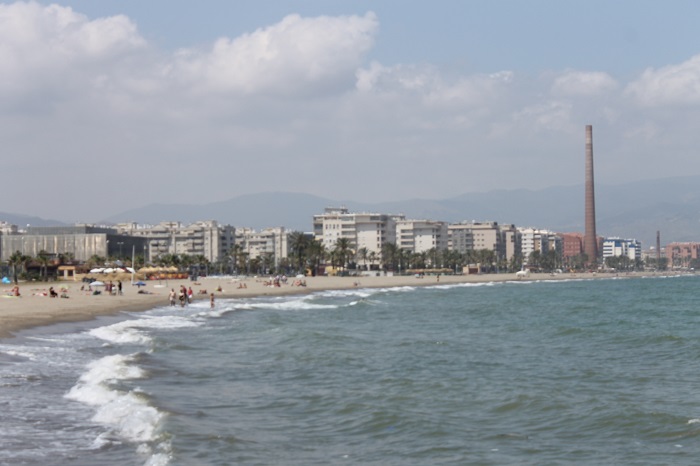
At the back end of my journey, I decided to travel to Toledo, which is one hour by train from Madrid. The spur of the moment decision was definitely worth it as the former imperial city was absolutely beautiful and I arrived just in time for the Corpus Christi celebration. Originally not part of my itinerary because it isn’t in Andalucia, I chose to spend my last day in Spain in Toledo rather than in Madrid. Formerly, the imperial capital city, it definitely reminded me of a genuine Medieval city with its old walls, fortifications, narrow alleys and imperial colors and banners hanging from the edifices. Highlighting Toledo’s medieval feel are the number of shops that sell Crusader items such military uniforms, swords and armor.
It is a perfect example of a Medieval fortress city, being surrounded by a massive wall on one side and a natural barrier in the form of Tajo River on three sides. It was one of the most charming cities I have ever seen in my whole life. The city prides itself as a melting pot of three cultures (Christian, Jewish and Muslim). The city has Roman, Visigoth, Arab and Christian roots, with an extensive Jewish influence. A number of interesting museums can be found in the city, including the Alcazar Military Museum and the El Greco Museum, among others. Getting around is definitely best done on foot as the city is relatively small. The city’s narrow and winding alleys are not commuter-friendly, but they perfectly define what the city is all about – which is a well-conserved example of Medieval urbanity.
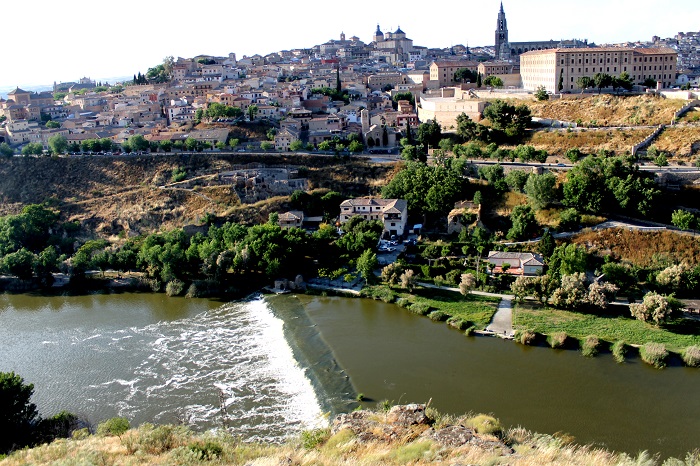
Being in Toledo also reminded of convivencia. It was here during the Dark Ages where the knowledge and wisdom of the classical period were conserved through the intercession of the Moorish rulers. While the vestiges of Roman and Greek writing and knowledge were being destroyed everywhere across Europe by barbarian hordes, Toledo was inscribing them for future generations. Hence, the world owes much to Toledo that we still know the writings of Aristotle and Socrates, to name a few.
Yet it was this wealth and wisdom that finally sealed its fate. Being close to the northern Christian fiefdoms, it naturally became a target of their envy. The fall of Toledo in 1085 was, without question, one of the watershed moments in world history. It signaled the coming fall of Moorish Spain which was sealed with the fall of Granada in 1492. The fall of Toledo also exposed the Christian fiefdoms to classical knowledge and scientific achievements. It was the works of Cordoba-born Moorish philosopher Averroes, who is now considered as the father of secular thought, that ignited the puritanical clergy’s push for the Spanish Inquisition. He had the temerity to suggest the first known record of the idea of the separation of the Church and the State. Deeming the works of philosophers such as Averroes as heretical, the Catholic Church which was closely allied with the Catholic monarchs endeavored to erase the vestiges of classical knowledge conserved in Toledo.
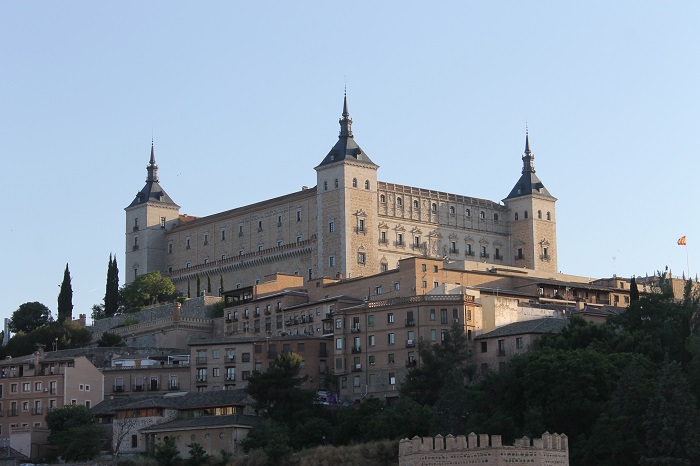
Religious tolerance, which came to define Toledo and Al-Andalus as a whole, gave way to religious extremism which led to the expulsion of the Jews from Spain and the forced-conversion of Moors into Catholicism. The fall of Al-Andalus now can be traced as the fore-runner of the religious animosity between the three faiths today. While 1492 is more known today as the year that the New World was discovered, I would dare say that it was the year that reason and common sense gave way to hate and extremism, the effects of which we still feel up to this day. The idea of convinvencia has disappeared and all the world is worse for it. Today, the fall of Al-Andalus reminds Muslims everywhere not of convinvencia but of the loss of territory and pride, something that must be redeemed through struggle.
The ten-day trip across Andalucia plus a surprise visit to the former imperial capital of Toledo counts as among the best trips I have ever had to date, and definitely one of the most informative. Andalucia reminded me of the need for peaceful coexistence among the three biggest religions. I have to admit that I count myself as an unbeliever, but the imprint of convivencia and its disappearance to current religious tensions is very striking. Regardless of one’s religious persuasions, one must admit that the answers to today’s problems can be found in the ruins of the fallen Al-Andalus, who for hundreds of years a thousand years ago practiced what is now deemed to be impossible – peaceful coexistence between the great faiths.